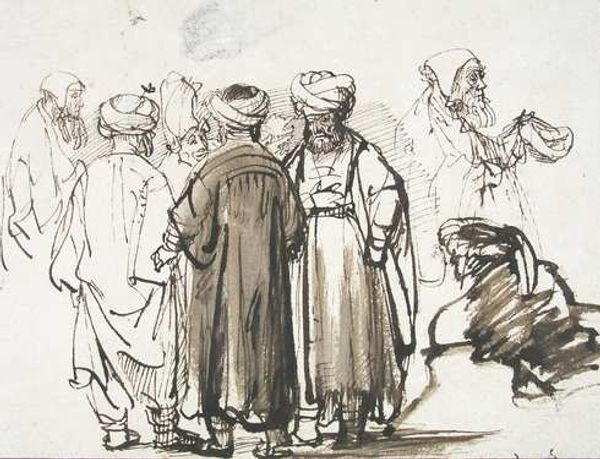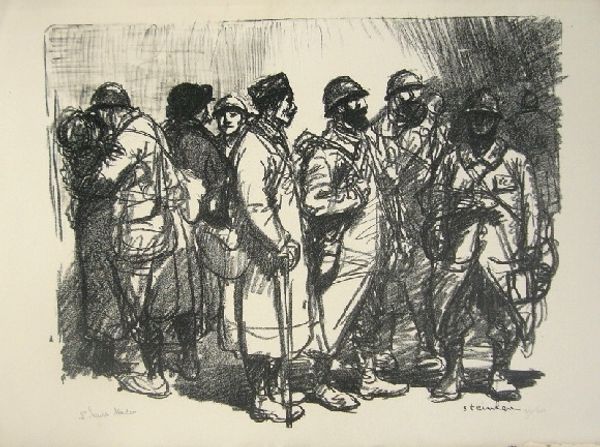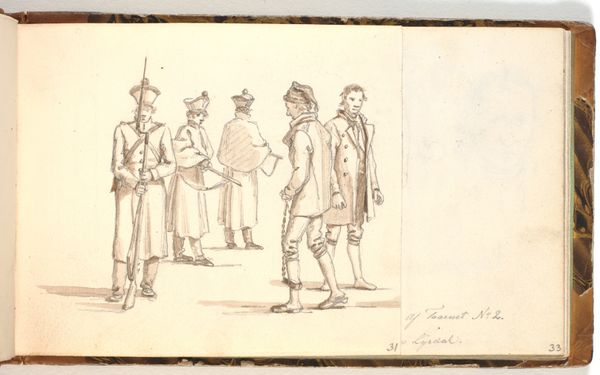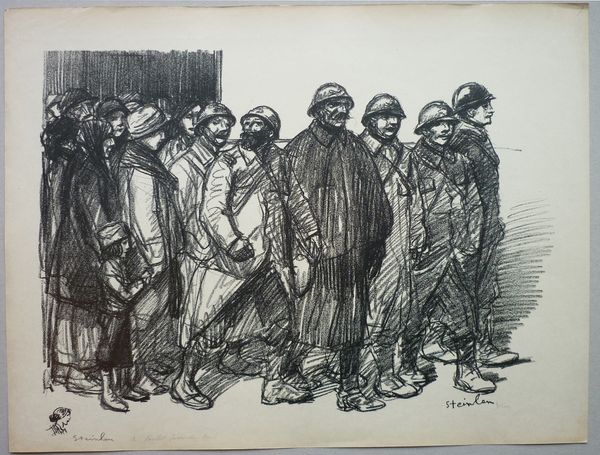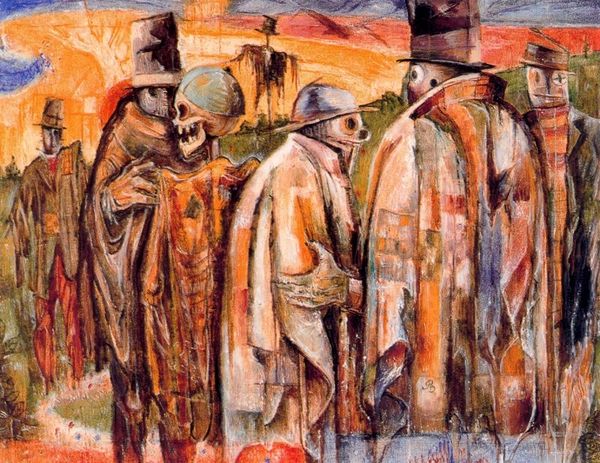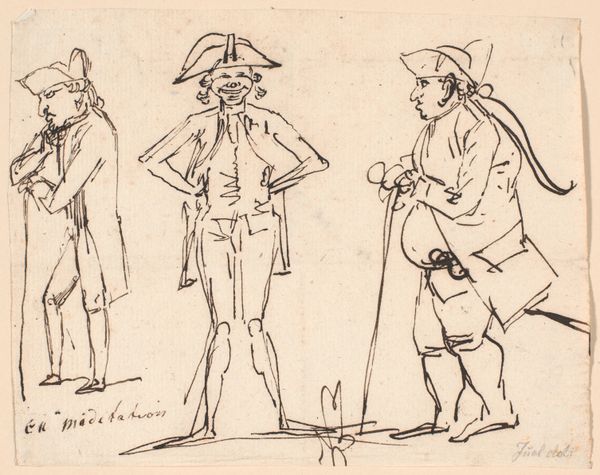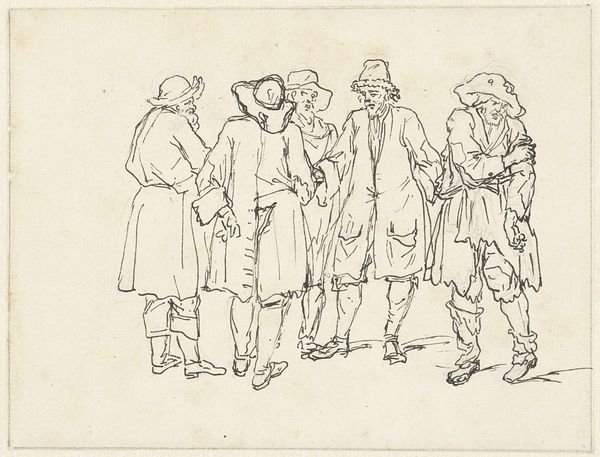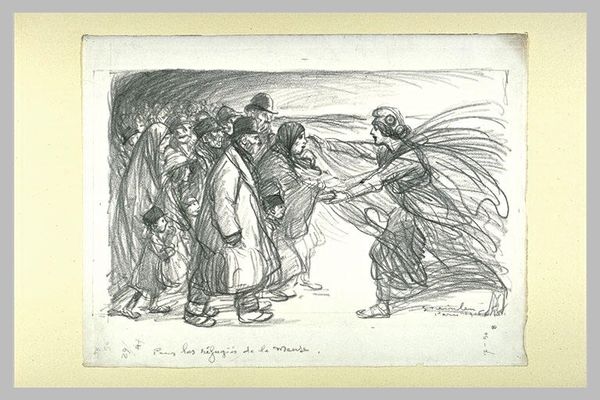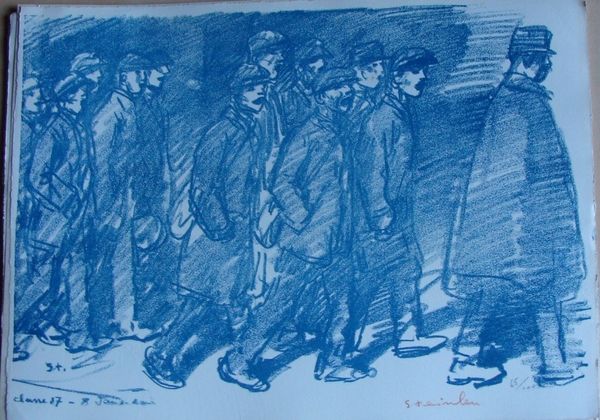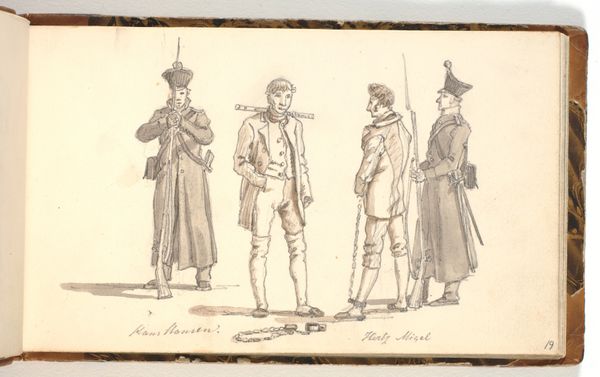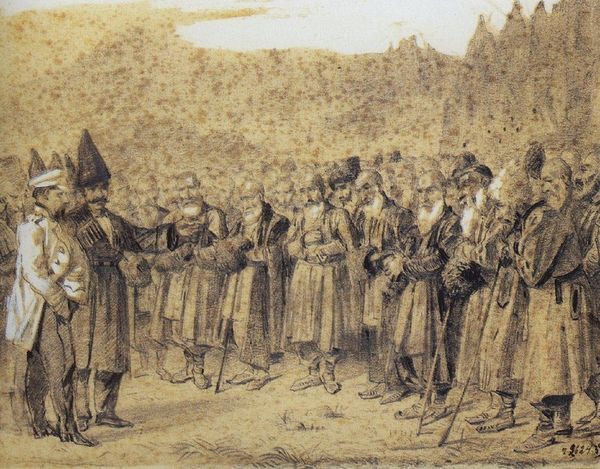
drawing
#
portrait
#
drawing
#
imaginative character sketch
#
fantasy concept art
#
quirky sketch
#
incomplete sketchy
#
personal sketchbook
#
sketchwork
#
sketch
#
sketchbook drawing
#
russian-avant-garde
#
history-painting
#
sketchbook art
#
sketching
#
fantasy sketch
Copyright: Public domain
Curator: Let’s discuss this striking sketch, "Prince Golitsyn and the Boyars," completed around 1910 by Konstantin Alexeevich Korovin. Editor: Immediately, I'm struck by the costumes, the towering hats and ornate robes evoke a sense of power and formality, though the sketchy quality suggests a more fleeting or even theatrical presence. Curator: Precisely! It captures figures from the past in a manner that reflects the rising aesthetic trends of the Russian avant-garde, pulling historical themes through the sensibilities of early modernism. Notice how their garments are labelled. Editor: Yes, Korovin seems to meticulously record the materials of this garb. It begs the question of whether it served as a stage design. Could you expand on the significance of this historical subject and how it might resonate in its own time? Curator: Certainly. Korovin was deeply invested in themes of national identity, especially centered around folk history and myth. Portraying Golitsyn, an influential figure in the late 17th century, allowed him to play with ideas of Russian governance and its relationship with the aristocracy. By placing the Boyars in their richly described regalia, he references historical events through familiar, yet distant figures, highlighting both continuity and transformation. Editor: I appreciate the blend of precision and whimsy. The light washes and energetic lines bring a vitality to figures who might otherwise seem remote, and I find that quite compelling. Do these sketchy, quickly drawn lines provide access to how Russians conceptualize the powerful figures that represent the past? Curator: Well, it does propose a new way to understand the place and time period. But beyond the historical themes, I think Korovin also grapples with the very idea of Russian identity on stage and its symbolic presence as it intersects with visual memory. Editor: A fascinating glimpse into the past filtered through a modern artistic sensibility. The quick strokes give life to the scene and draw our focus to how past figures are reimagined and remembered in modern Russian society. Curator: Indeed, Korovin’s image serves as a bridge, inviting us to contemplate the enduring symbols of Russian history. Editor: And it leaves us pondering how these visual emblems inform contemporary understandings of power, status, and national narrative.
Comments
No comments
Be the first to comment and join the conversation on the ultimate creative platform.
